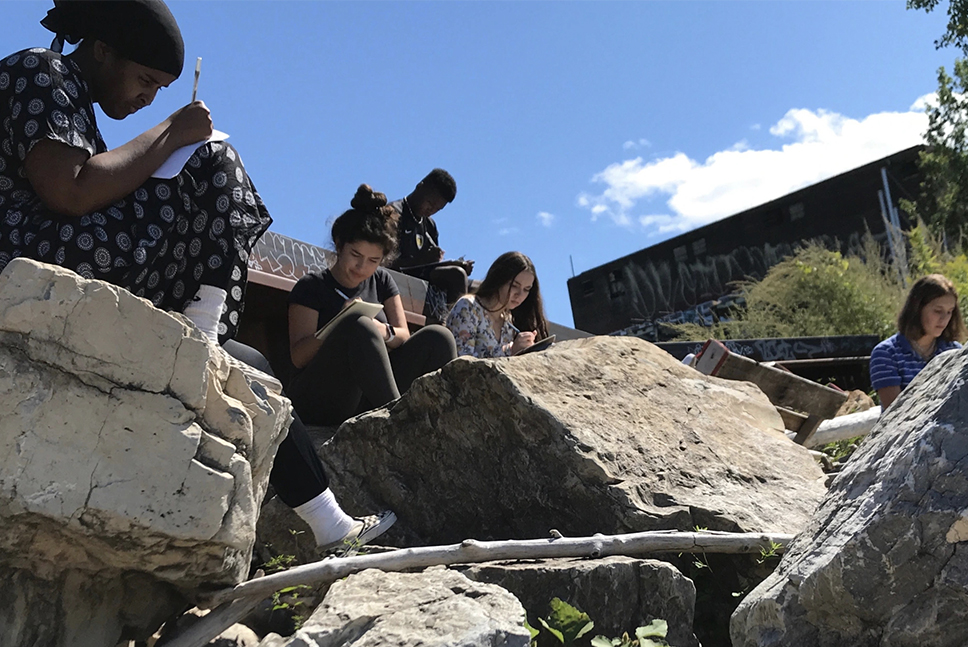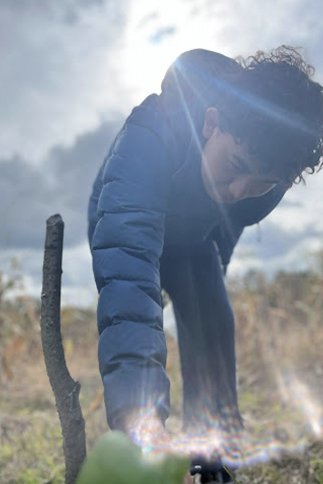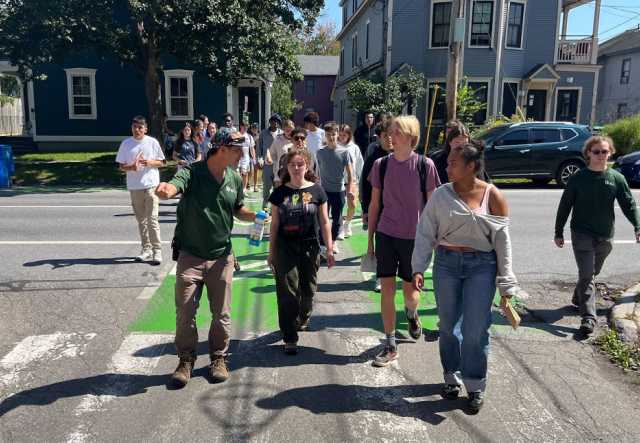Centering Inquiry
The Burlington City & Lake Semester (BCL) is hard to summarize. At its core, it is a place-based learning program for a diverse group of public high school students, in which their own city acts as both classroom and curriculum. Since its founding in 2018, it has thrived thanks to a unique public-nonprofit partnership between the Burlington School District and Shelburne Farms. If you ask students what BCL is like, they might tell you about what it feels like to grapple with complex real-world issues, to experience nature connection, or to engage in youth-adult partnerships. But they are just as likely to tell you how it feels to be curious again.

Curiosity is a pervasive aspect of BCL’s culture. Over the course of the semester, students become more and more comfortable with open-ended questions, many of which don’t have easy answers — or answers at all. Embracing inquiry can be daunting, but it also gives learners more agency. “It’s refreshing to be driving my own learning,” wrote Greta. “Now, I feel like when I’m outside of school I’m asking questions all the time, which makes life more interesting.” Another student, Jalen, wrote, “I wish that more people would embrace inquiry in all parts of life. People accept that young kids ask lots of questions, but not so much for adults. I think everyone would benefit from asking more questions.”
In BCL, curiosity is both a mindset and a practice. It bubbles up with peers, it’s stoked by time spent with adult professionals, and it expands through journaling and reflective writing. Prior to new experiences, students generate questions. Their curiosity fuels their dialogue with community partners. Afterwards, they reflect not just on the content they have learned, but also the new questions they are left with.
This journey — crafting open-ended questions, paying attention to how those questions shift and evolve, and identifying new questions that arise — is what BCL students come to know as The Inquiry Cycle. The idea that questions can lead to more questions is not radical, but over the years, I have found that centering inquiry is a powerful leverage point. When we allow ourselves to wonder, we can easily shift the culture, purpose, and impact of learning.
 One place in BCL where that inquiry is deliberately honed is the Inquiry Project. In these projects, students begin with an open-ended question and engage in real-world research (typically qualitative methods such as interviews, observations, etc.). As they explore, they pay as much attention to the process of learning as they do to the content they are learning. Over the course of the semester, students engage in three inquiry cycles. Each time, they increase the complexity of their methods, and the depth of the learning. By the end of the semester, they are able to connect their emerging perspectives to our essential question: What does it take for a community to thrive?
One place in BCL where that inquiry is deliberately honed is the Inquiry Project. In these projects, students begin with an open-ended question and engage in real-world research (typically qualitative methods such as interviews, observations, etc.). As they explore, they pay as much attention to the process of learning as they do to the content they are learning. Over the course of the semester, students engage in three inquiry cycles. Each time, they increase the complexity of their methods, and the depth of the learning. By the end of the semester, they are able to connect their emerging perspectives to our essential question: What does it take for a community to thrive?
Many parts of this process are empowering. One of these is choice. As Wesley wrote, “When I get to pursue what I want, I’m more engaged since [the question] I pick is something I want to pursue. It’s a chance to focus on something I want to learn about.” Cole echoed this sentiment. “There is more freedom in what you learn,” he wrote, “but there is also more responsibility. In a regular class a teacher will assign a topic and you have to research that topic, but it might not be something you enjoy. In BCL, there is room for you to choose what you’re interested in and dive deeper.”
Recent inquiry questions include:
- Why is it so hard to shop for clothing sustainably?
- How does phone use impact productivity?
- How is protest part of Vermonters’ culture?
- How culturally inclusive is Burlington’s Art Hop event?
- How dependent is Burlington’s Church Street Marketplace on tourists?
and - Should graffiti be considered an art form or a crime?
The questions are as diverse as the student participants.
Inquiry Projects also raise the bar on learning because real-world research requires risk. “Inquiry projects feel different from what I’m used to,” wrote Sophia, “because they require you to go out in your community and learn from real people and experiences. This is good, but it’s also challenging, because it’s on you to set up your own interviews.” No matter which methods they use, students have to put themselves out there, and engage with adult professionals. It’s daunting, but ultimately rewarding. “It was scary to reach out to a business owner, but once we were talking, it was pretty comfortable,” wrote Malik. “The conversation felt normal.”

Of all the elements of the inquiry cycle, there is one that feels the most awkward, at least at first: instead of concluding with a summary of their findings, students are asked to finish with another open-ended question. It’s a small shift in educational design, but it turns out to be transformative. For one, it invites the student themselves back into the learning process. Even as they are taking in new information, they are constantly reflecting on how what they are learning influences and shifts their own perspective. Because of this, reflection and metacognition are baked into every moment.
This also creates space for authentic discovery. Conventional high school research projects are often deductive, with the conclusion known to the teacher before the student even begins. By contrast, the inductive nature of Inquiry Projects invites serendipity, discovery, and surprise. When it’s time to present, instead of merely telling an audience what they know, students are able to tell the story of their learning — how their curiosity itself changed shape as they added layers of experience and understanding.

Given how different the Burlington City & Lake Semester is from the conventional classroom, one might expect that it would take weeks for students to embrace this novel approach to learning. When every semester begins, I guard myself, assuming that the adjustment will be challenging. But each time, I am astounded by how quickly students take the leap. In a matter of days, they are fully engaged in their new learning environment.
The speed of this transition is a reminder that curiosity, inquiry, and surprise aren’t actually new, but instead a return to something familiar. As Jamie wrote, inquiry-based learning “feels like we are able to truly learn the way we naturally should.”
A few simple ways to ignite (or reignite) inquiry in your classroom or learning environment
- Introduce and explore the difference between closed-ended and open-ended questions.
- Offer real-world examples, in which open-ended questions lead to new and different open-ended questions.
- Encourage students to craft their own open-ended questions, and explore their questions using a variety of methods.
- Instead of presenting their findings or conclusions, invite students to tell the story of what they experienced – and how it changed their perspective.
- Support students as they shift from “sharing expertise” to telling the story of their learning.
- Frame student presentations-of-learning so each one ends with a new open-ended question.
- Play with sentence stems such as “I wonder…,” “Now I’m curious about…,” and “My new question is…”
- Encourage meta-cognition by asking students to write or share about their learning (“What did it feel like to learn in this way?” and “How has this new learning changed you?”)
- Share and model your own curiosity, at every opportunity!



